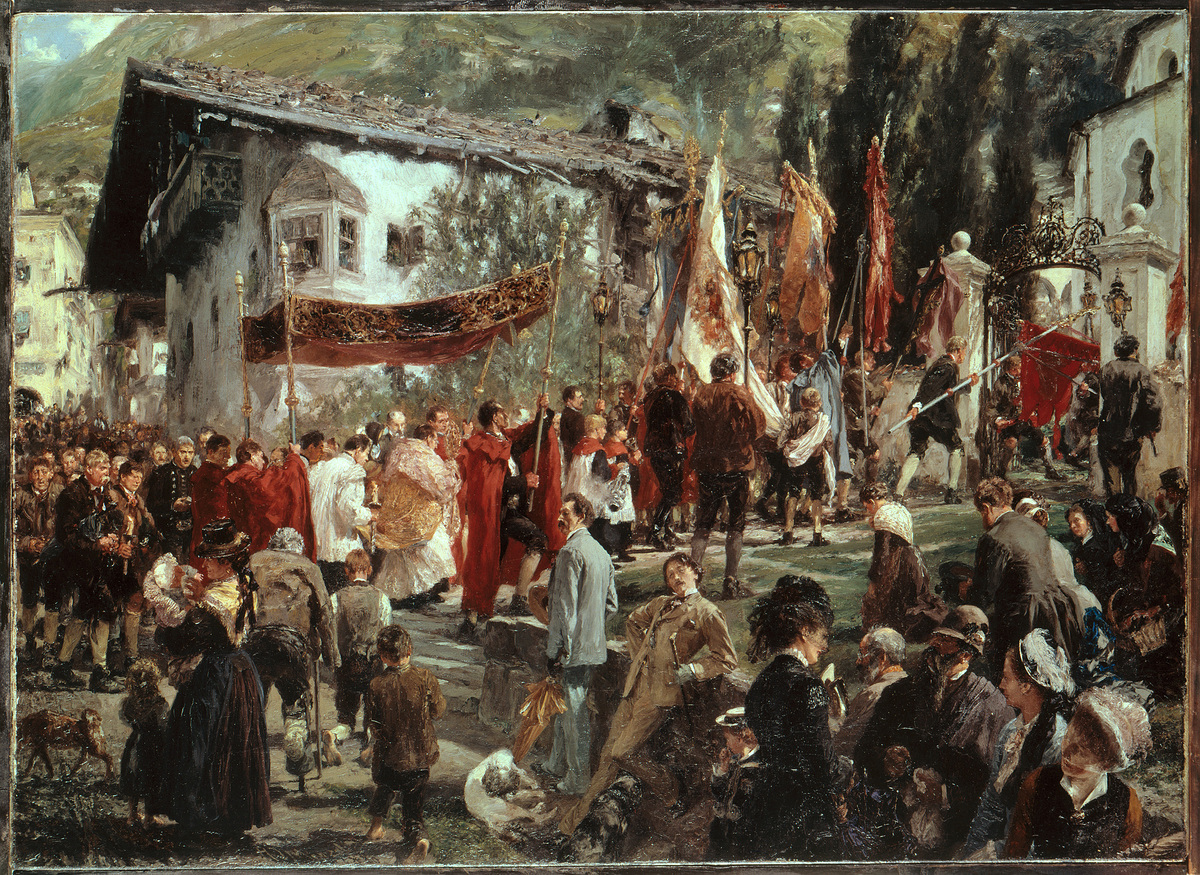Abstract
That the “new German art” of the 1880s would reflect the political
and cultural struggles of the day was inevitable. This painting by
Adolph Menzel (1815–1905), also titled
Corpus Christi Procession at
Hofgastein, shows how the
Kulturkampf played out on canvas.
Menzel’s painting depicts both Catholic piety and liberal indifference
to religion: thus, it gives two answers to the question, “Would a
painting of a Catholic religious festival be considered a positive
depiction of popular piety in the everyday lives of Germans living in
Catholic areas of Germany, or would it be considered subversive at a
time when Catholic clergy were experiencing the repression of the state
and when Catholic localities were rallying in support of their
church?”
When this painting was shown in Munich and Berlin in the 1880s and
1890s, critics marveled at Menzel’s ability to depict the ritual
procession of Catholic clergy and laity in traditional dress through a
picturesque village (not in Germany at all, as it happens, but in an
Austrian resort). But the painting offers more than a straightforward
rendering of its subject: it also comments on the deep social and
confessional divisions in the Germany of Menzel’s day. It does so, in
part, by creating a sense of disjuncture between the members of the
procession and those who either watch or appear in proximity to it.
The lower-right third of the painting features a diverse group of
burghers, who strike various poses in response to those passing by. The
Munich art critic Friedrich Pecht described some of these figures: near
the painting’s center is a mustachioed Austrian cavalier, who appears
outwardly attentive but inwardly indifferent; behind him, leaning
against a stone wall, is a young man who has turned his back on the
procession to show either disinterest or disrespect (tellingly, Pecht
alleged this figure to be either a Jewish journalist or an ambitious
student training for a position in the civil service). In the lower
right, Pecht identified a boastful and pretentious north-German
businessman, accompanied by Viennese women, whom he considered “more
experienced than beautiful.” The tension between the procession and the
burghers is heightened when the viewer’s eye, traveling along the path’s
gently rising diagonal, arrives at the right edge of the painting, where
Menzel introduces a group of pious worshippers—including women,
children, and the disabled—who kneel rather than parade to show their
own reverence for the church.
Ultimately, Menzel refuses to provide any easy narrative resolution
to this confused scene of dignity and chaos, and to the unfathomable
sentiments that he has rendered in paint. The only sense of coherence is
pictorial, achieved by way of the diagonal that helps organize the space
of the painting. Indulging his painterly impulses, Menzel celebrates the
glorious dance of sunlight and the bold colors of the festive costumes.
Greater truths remain as open to interpretation as the indistinct
mountains in the background.
